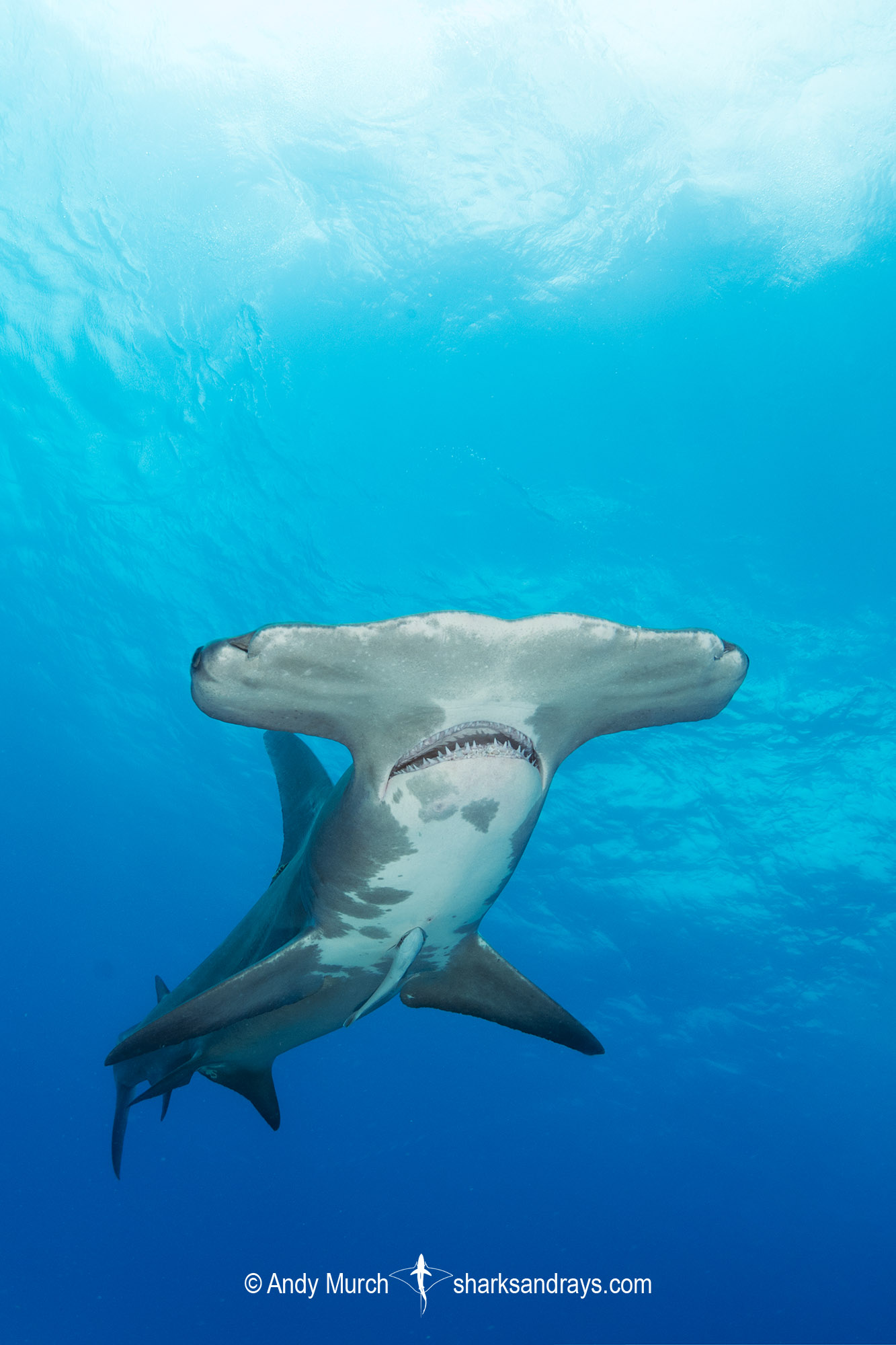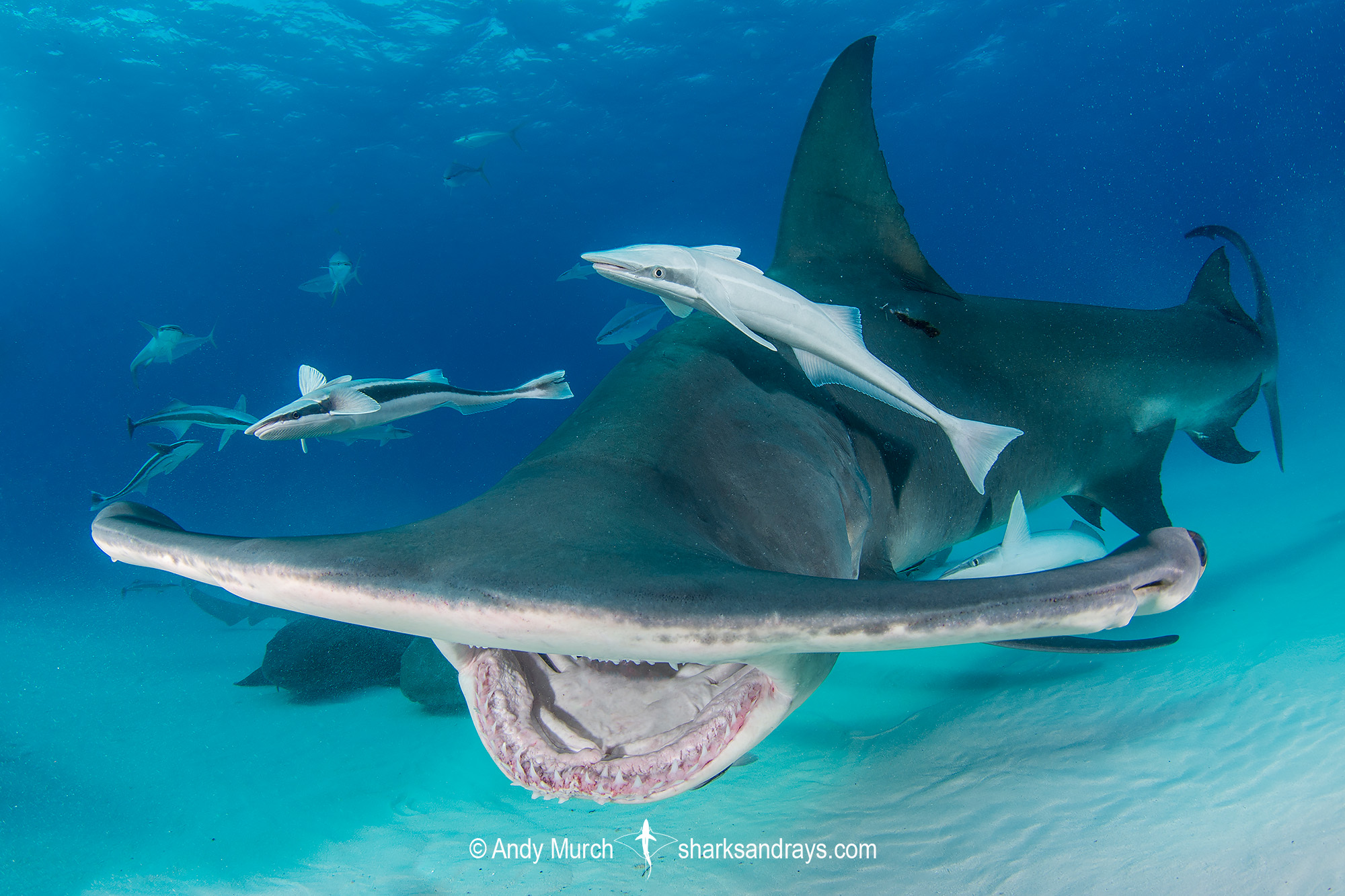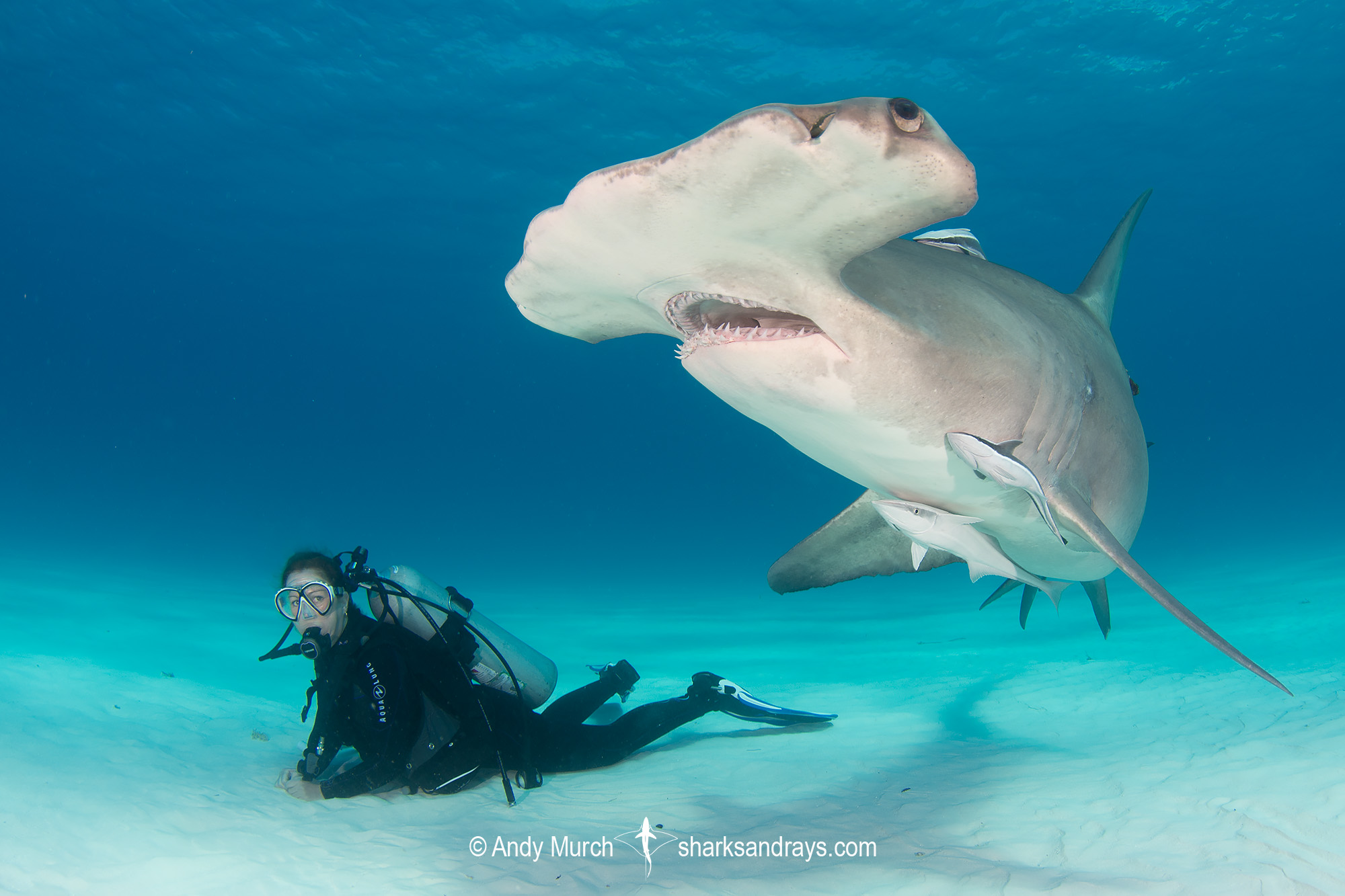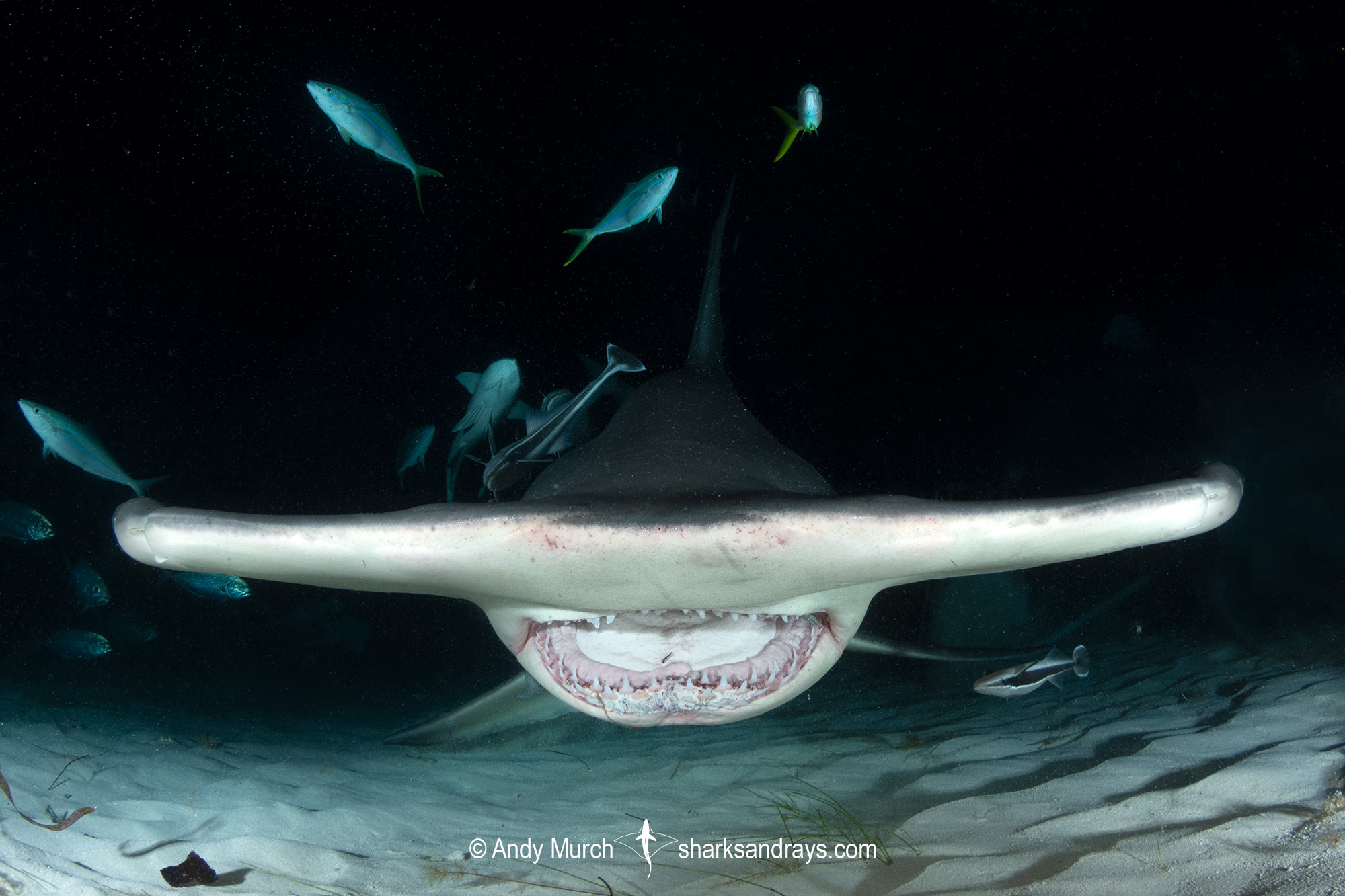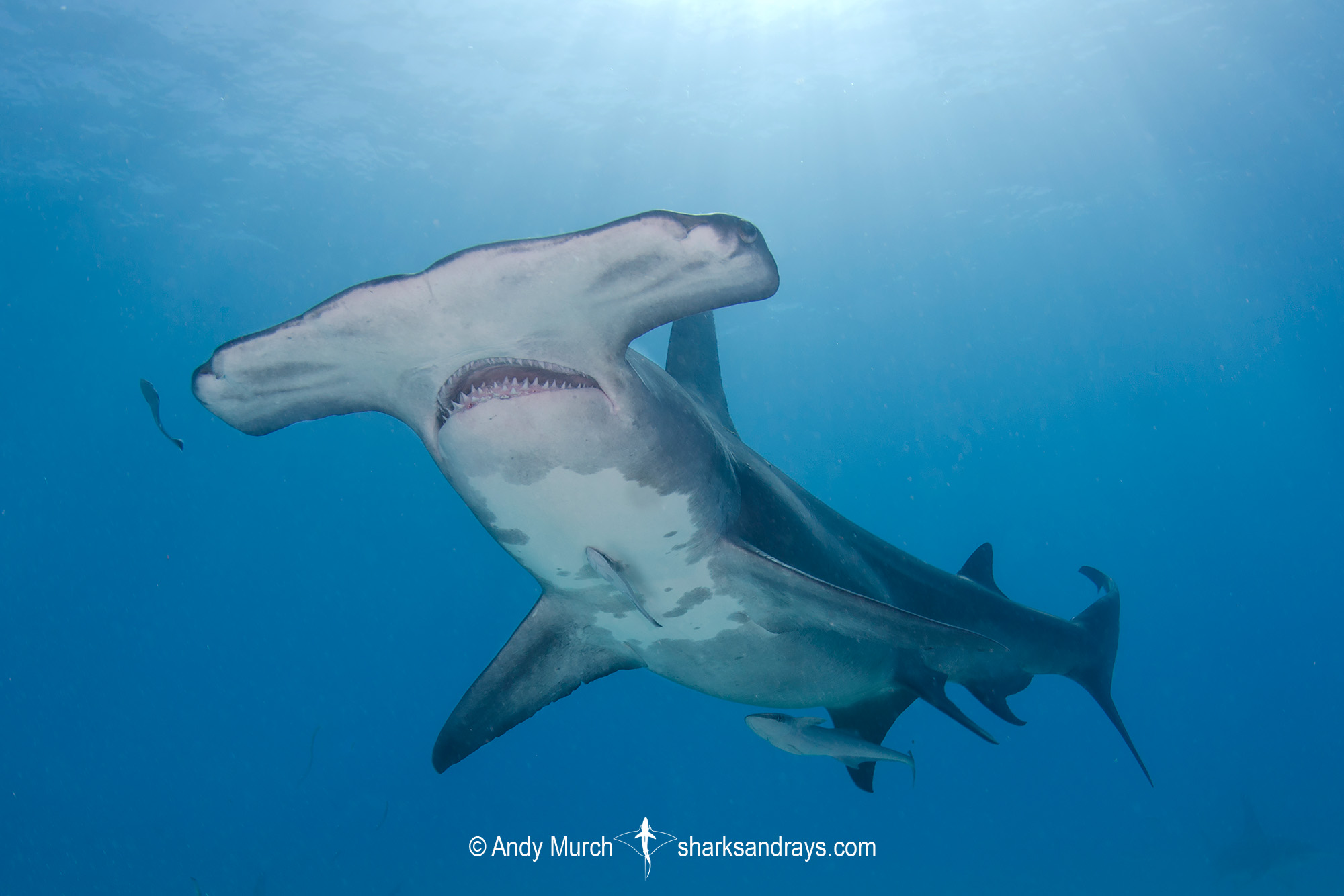Common names
Great Hammerhead.
Binomial
Sphyrna mokarran.
Synonyms
Sphyrna ligo, Sphyrna mokorran, Sphyrna mukaran, Zygaena dissimilis, Zygaena mokarran.
Identification
Large size. Leading edge of hammer straight (T-shaped) with well defined central indentation and indistinct lateral indentations. Younger animals have a more curved, narrower hammer. First dorsal very high and falcate. Second dorsal and pectoral fins also proportionately high and falcate. Dorsal coloration quite variable from grey to brown to golden. Ventral surface pale.
Size
The great hammerhead is one of the largest predatory sharks but the reported maximum length of 620cm remains unverified. Extremely large adults exceed 500cm but sightings of large animals are rare. Males mature at 234-269cm. Females mature at 250-300cm.

Conservation Status
CRITICALLY ENDANGERED
The great hammerhead is is a targeted and bycatch component in coastal and pelagic longline, purse seine, and gillnet fisheries. It is often retained for the fins. When released, post-release survivorship is very low.
The Great Hammerhead has declined dramatically in the Indian Ocean, Mediterranean Sea, and in much of the Atlantic. Due to strict manangement, the population in the Northwest Atlantic may be slowly increasing. The global population of great hammerheads has been reduced by at least 50.9–62.4%, but a greater reduction of 80% over the last 70+ years is suspected.

Habitat
Inshore reefs and continental shelves down to at least 80m but probably considerably deeper. Adults are semi-oceeanic, undergoing long migrations.
Distribution
Circumtropical in coastal and near coastal oceanic waters.
Reproduction
A viviparous species with yolk-sac placenta. Litter size 6-42. Gestation 11-12 months. Reproductive cycle probably every two years.
Diet
Diet consists of a wide variety of fishes with a preference for demersal species such as stingrays, catfishes, and flounders. Interestingly, Dodrill (1977) noted that in surveys, great hammerheads had the highest percentage of stomachs containing food.
Behavior
Nomadic. Undertakes extremely long migrations but returns to breeding/pupping areas each year. One great hammerhead tagged in Bimini in the Bahamas underwent a spring migration to South Carolina on two separate years; a round trip of 1600km.
Reaction to divers
Shy in un-baited situations but extremely bold (but not necessarily aggressive) during shark feeds.
Diving logistics
By far the easiest place to encounter Great Hammerheads is on baited dives around Bimini Island in the Bahamas. At this location, divers generally descend the sand at 7-14m depth, and wait for the hammerheads to approach from down current. Although they often approach very closely, the hammerheads are rarely aggressive.
Between 2 and 10 great hammerheads usually show up to the feed but I have seen 15 different animals over the course of a day.
Divers can expect to see a few bull sharks on the periphery of the feed, and often 20-30 nurse sharks. Occasionally a tiger shark may show up as well.
The shark feeders actively avoid feeding the bull sharks and nurse sharks, and deter any bull sharks from approaching closely by hitting the metal bait crate. Interestingly, this metallic noise appears to frighten the bulls but has virtually no effect on the hammerheads.
Further north on Little Bahama Bank, Tiger Beach (a world famous tiger shark baited encounter) also sometimes attracts one or two great hammerheads.
Both locations are seasonal with encounters dropping off during the hot summer months.
Elsewhere in the Bahamas and Caribbean, un-baited sightings are not uncommon but in those situations, hammerheads rarely make close approaches.
In the Pacific great hammerheads are sometimes encountered on unbaited dives. In Rangiroa, French Polynesia divers often see Great Hammerheads predating on spotted eagle rays. This encounter is highly seasonal (January to March) and the encounters are very deep at 40-50m.
Similar species
Smooth hammerhead distinguished by smaller size and leading edge of hammer which is more curved and has no central indentation.
Scalloped hammerhead distinguished by smaller size and more curved and heavily ‘scalloped’ leading edge of hammer.

Carolina hammerhead Visibly identical to the scalloped hammerhead.
















